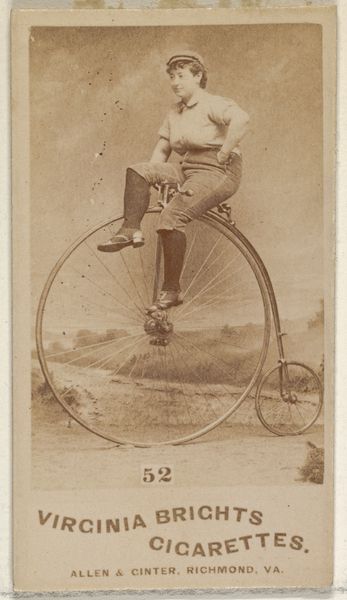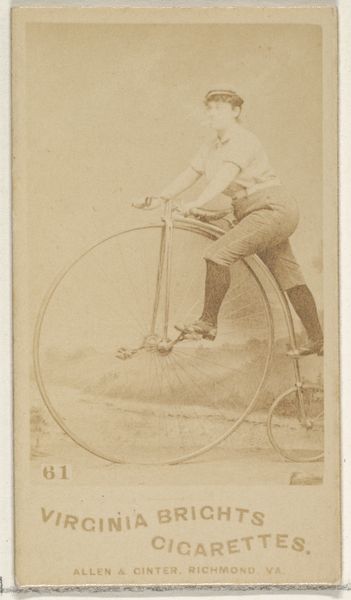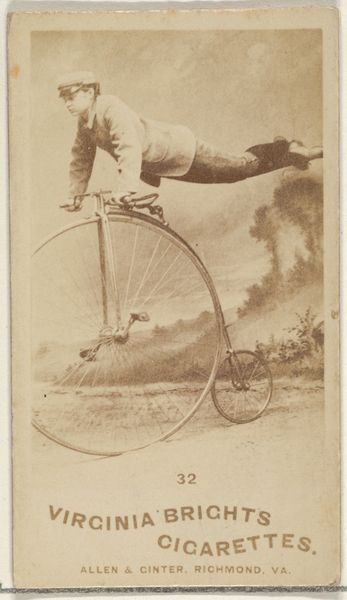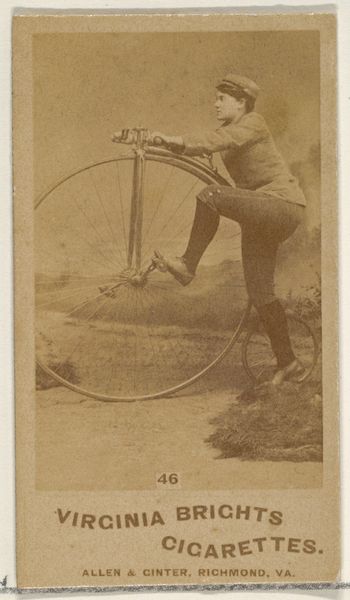
Card 60, from the Girl Cyclists series (N49) for Virginia Brights Cigarettes 1887
0:00
0:00
drawing, lithograph, print, etching, photography
#
portrait
#
drawing
#
lithograph
# print
#
etching
#
photography
#
genre-painting
Dimensions: Sheet: 2 3/4 x 1 3/8 in. (7 x 3.5 cm)
Copyright: Public Domain
Editor: Here we have Card 60, from the Girl Cyclists series, made in 1887 by Allen & Ginter. It's a lithograph, one of many printmaking methods. It has such a sepia tone, it's easy to fixate on that. But I wonder if you could help me interpret it further, what do you see in this piece? Curator: Immediately, the composition grabs my attention. The cyclist, positioned slightly off-center, intersects a monumental wheel which creates a striking contrast with the smaller wheel. The tonal range is narrow but the print displays sophisticated gradation achieved through skillful etching and lithographic processes. The print is not striving to capture life or movement. How do the geometry of its elements affect the way we understand the subject matter, though? Editor: I guess the off-center balance adds dynamism, making it less static, even though it's just a snapshot. Do the Virginia Brights Cigarettes advertising at the bottom play any role in how we might look at it? Curator: The text certainly functions as a frame, directing the eye. Allen & Ginter understood visual hierarchy. They were intentionally underscoring that relationship between commerce and artistry in print media. It also allows the artist to frame their work for diverse interpretations. But look closer at the contrast between the rider's form and the stark geometric clarity of the bicycle and column... How are these elements contributing or conflicting in the image's meaning? Editor: Well, now that you mention it, the softness of the rider plays with the harshness of everything man-made, it provides some complexity to its subject. It's making me rethink how commercial images and the artistry behind them, as this is pretty removed from pure marketing! Curator: Precisely. And from my point of view, it is this intricate layering of elements, each playing off the other, that elevates the image beyond simple representation and advertisement. This is a testament to formal arrangement generating interpretive richness, so even its intention does not confine our viewing. Editor: That’s fascinating. I hadn’t considered how the composition and production techniques themselves could contribute to the work's complexity in such a way.
Comments
No comments
Be the first to comment and join the conversation on the ultimate creative platform.













